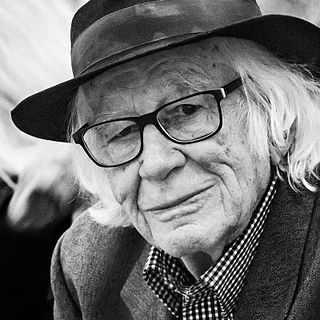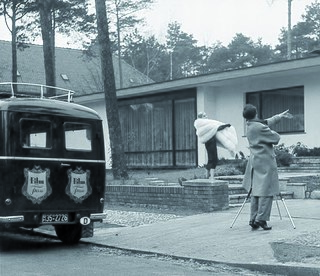
The Goethe-Institut is a non-profit German cultural association operational worldwide with 159 institutes, promoting the study of the German language abroad and encouraging international cultural exchange and relations. Around 246,000 people take part in these German courses per year.

Ludlow Street runs between Houston and Division streets on the Lower East Side of Manhattan in New York City. Vehicular traffic runs south on this one-way street.

The ZKM | Center for Art and Media Karlsruhe, a cultural institution, was founded in 1989 and, since 1997, is located in a former munitions factory in Karlsruhe, Germany. The ZKM organizes special exhibitions and thematic events, conducts research and produces works on the effects of media, digitization, and globalization, and offers public as well as individualized communications and educational programs.

Alfons Hug is a curator, critic and exhibition organizer.

Fritz Koenig was a German sculptor, considered one of the most important international German sculptors of the 20th century.

Michael Ruetz was a German photographer, artist, journalist and author. He became first known for photos of the West German student movement that were published by international papers and magazines. Ruetz covered the 1968 invasion of Czechoslovakia by Soviet troops and military dictatorship in Greece. He focused later on cultural-historical and documentary projects, exploring the "visual world" of Johann Wolfgang von Goethe and Theodor Fontane in series such as In Goethe's Footsteps. Projects after the 1980s deal with visualizing time and transience, photographing the same objects again and again over a long time.

The Frankfurter Kunstverein e. V. in Frankfurt am Main is a non-profit organisation dedicated to the promotion of contemporary art and culture. It is one of the oldest German art associations.
Allan Sekula was an American photographer, writer, filmmaker, theorist and critic. From 1985 until his death in 2013, he taught at California Institute of the Arts. His work frequently focused on large economic systems, or "the imaginary and material geographies of the advanced capitalist world."
Gregor Schneider is a German artist. His projects have proven controversial and provoked intense discussions. In 2001, he was awarded the Golden Lion at the Venice Biennale for his infamous work Totes Haus u r exhibited at the German Pavilion.
Susanne Kessler is a German – Italian painter, illustrator and installation artist.

Dieter Jung is a German artist working in the field of holography, painting and installation art. He lives and works in Berlin.

Asta Gröting is a contemporary artist. She works in a variety of media like sculpture, performance, and video. In her work, Gröting “is conceptually and emotionally asking questions of the social body by taking something away from it and allowing this absence to do the talking.”
e-flux is a publishing platform and archive, artist project, curatorial platform, and e-mail service founded in 1998. The arts news digests, events, exhibitions, schools, journal, books, and art projects produced and/or disseminated by e-flux describe strains of critical discourse surrounding contemporary art, culture, and theory internationally. Its monthly publication, e-flux journal, has produced essays commissioned since 2008 about cultural, political, and structural paradigms that inform contemporary artistic production.

Muu Blanco, is a multidisciplinary Venezuelan artist. He works in the plastic arts, performance, drawing, photography, electronic music, conceptual video, and handbag design. His compositions have been presented locally as well as internationally, including in cities like: New York City, Berlin, Miami, Barcelona, Bogota, Buenos Aires, London, Vancouver and Milan. His work has been regarded as a criticism to power, wealth and narcissism, as well as commentary on the urban landscape of modern Caracas.
Elias Wessel is a visual artist living and working in New York and Germany.

Franz Christian Gundlach was a German photographer, gallery owner, collector, curator and founder.
Christoph Girardet is a German filmmaker and artist. He lives and works in Hanover.

Sandra Mann is a German artist and photographer. In her cross-genre work, she deals conceptually with the relationship between people, with nature, the environment, the animal world and gender issues. Her work is characterized by research into the fundamentals of photography and visual language. In 2021, she was awarded the Goethe plaque from the city of Frankfurt am Main.

The Württembergischer Kunstverein Stuttgart was founded in 1827 and is one of the oldest art associations in Germany. The association, which today has around 3,000 members, is based in the Kunstgebäude Stuttgart and is dedicated to communicating contemporary art. The curator and publicist Martin Fritz has been the chairman of the Württembergischer Kunstverein, which belongs to the Arbeitsgemeinschaft Deutscher Kunstvereine (ADKV), since 2018.














